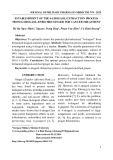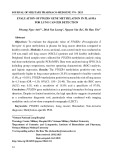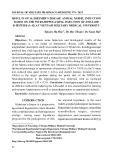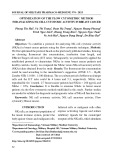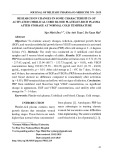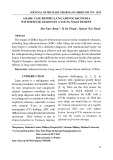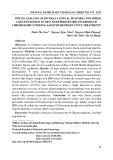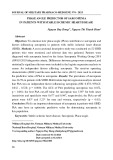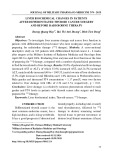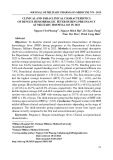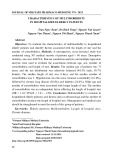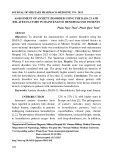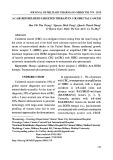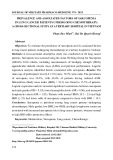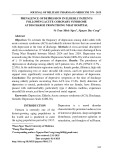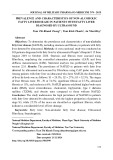
JOURNAL OF MILITARY PHARMACO-MEDICINE N04 - 2025
83
CLINICAL AND PARACLINICAL CHARACTERISTICS
OF DENGUE HEMORRHAGIC FEVER DURING PREGNANCY
AT MILITARY HOSPITAL 103 IN 2023
Nguyen Viet Phuong1*, Nguyen Minh Hai1, Do Xuan Tung2
Tran Viet Tien3, Trinh Cong Dien1
Abstract
Objectives: To describe clinical and paraclinical characteristics of Dengue
hemorrhagic fever (DHF) during pregnancy at the Department of Infectious
Diseases, Military Hospital 103 in 2023. Methods: A cross-sectional descriptive
study was conducted on 162 pregnant patients diagnosed with DHF and treated at
the Department of Infectious Diseases during the 2023 epidemic (from January
2023 to December 2023). Results: The average age was 28.92 ± 5.64 years old,
and the average gestational age was 18.98 ± 16.75 weeks. Clinical characteristics:
Fever was 84.4%; headache and eye socket pain was 76.5%; bleeding gums was
8.6% and abnormal vaginal bleeding was 2.5%; pleural or peritoneal effusion was
7.4%. Paraclinical characteristics: Decreased white blood cell (WBC) (< 4 G/L)
was 28.4%, decreased platelet (< 150 G/L) was 69.1%. The first-trimester group
had the highest average hematocrit (HCT) (%) and WBC (p < 0.05), and the
second-trimester group had the lowest average platelet (p < 0.05) compared to
other groups. Blood biochemistry tests showed increased AST (≥ 40 U/L) and ALT
(≥ 40 U/L) in 46.7% and 49.3% of cases, respectively. The third-trimester group
had the highest average AST and ALT compared to other groups (p < 0.01). Disease
severity was classified as DHF with warning signs in 24.7% of cases and severe
DHF in 1.8% of cases. The third-trimester group had the highest rate of DHF with
warning signs and severe DHF (p < 0.05). Conclusion: Pregnant women with DHF
exhibit different clinical and paraclinical characteristics depending on the stage of
pregnancy. The third-trimester group experienced more severe liver injury and
disease severity compared to the first and second-trimester groups.
Keywords: Pregnancy; Dengue hemorrhagic fever; Clinical and paraclinical
characteristics.
1Military Hospital 103, Vietnam Military Medical University
2Academy Hospital 87
3Vietnam Military Medical University
*Corresponding author: Nguyen Viet Phuong (vietphuongnt203@gmail.com)
Date received: 20/11/2024
Date accepted: 02/01/2025
http://doi.org/10.56535/jmpm.v50i4.1100





